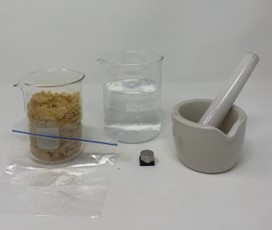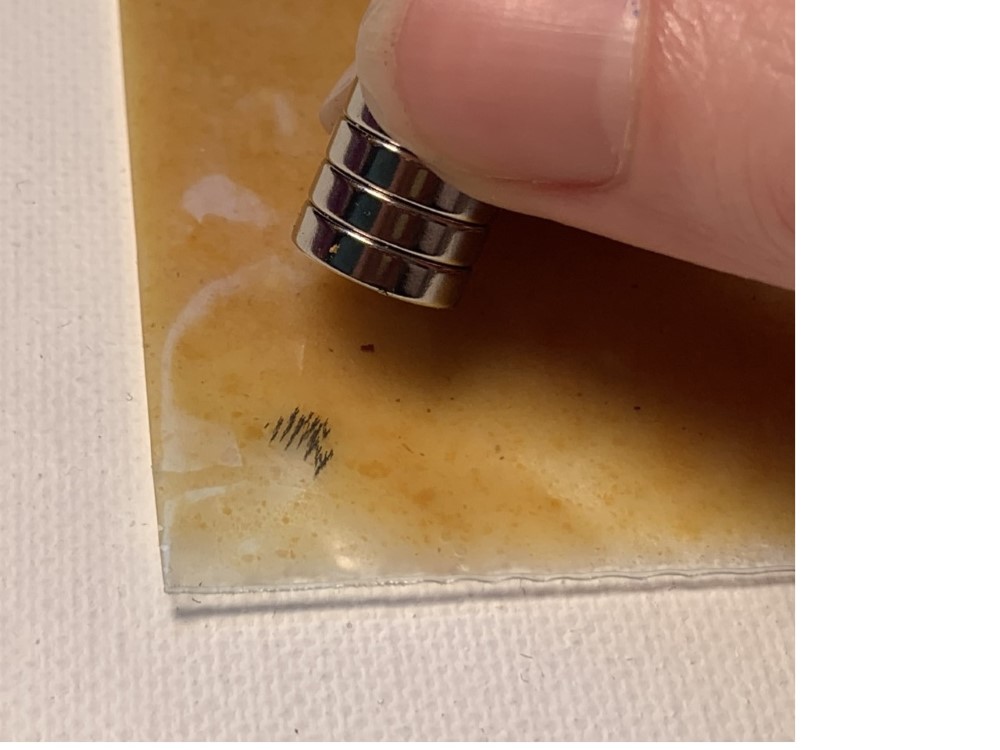Earth Science Week Classroom Activities
Iron Minerals on the Moon
Activity Source:
Minerals Education Coalition. Adapted with permission.
This easy exercise models one of the processes currently being researched at four U.S. universities to enable recovery of iron and other materials found on the Moon to construct an inhabited workstation. Research is being done to perfect magnetic separation techniques to recover iron-bearing minerals from the lunar soil.
Magnetic separation is used to separate iron from other materials in iron ore processing. Magnetic separation is also used when recycling Portland Cement Concrete Pavement to remove the reinforcing steel from the crushed materials. In this exercise, students will use magnetic techniques to separate the iron from iron-fortified breakfast cereal.

Credit: Joseph Bindner, Minerals Education Coalition
Materials
-
Cup of iron fortified breakfast cereal (Total® or Cornflakes® work well)
-
Strong magnet
-
Water
-
Clear plastic drinking cup or a resealable plastic bag
-
Large spoon and bowl, or mortar and pestle (for crushing cereal)
-
Spoon
-
Scale (optional)
-
Not an endorsement or recommendation.

Credit: AGI/L. Mossa
Procedure
-
Put the cereal into a large bowl or mortar. Hold a magnet over the cereal to observe the attraction of the iron in or on the cereal flakes as they interact with the magnetic field created by the magnet.
-
Crush the cereal using a spoon or pestle until it is a fine powder. Don’t use the bag to crush the cereal, as the bag will be punctured.
-
Place the crushed cereal in a clear plastic drinking cup or a zipper closure bag, then add enough water to make a suspension or slurry.
-
While swirling the slurry in the plastic drinking cup or closed bag, hold the magnet against the outside surface of the container. Notice the iron fragments (dark colored particles) that collect on the inside of the plastic container next to the magnet.
-
Use the spoon to scrape the iron fragments from the inside surface of the container and reclaim them for further examination and analysis if desired.
-
If you have a scale, take the mass of the reclaimed iron.
-
Find the iron content of the cereal by looking at the nutrition label on the cereal box (often reported in milligrams, mg). If possible, conduct this test with other cereals and compare their iron content. Hypothesize whether you expect to reclaim more or less iron with the other cereals you test.
-
Discuss: Why are there particles of iron in the cereal? How was that iron originally obtained? Where is iron mined in the United States? What are some other uses for iron?
Go to www.MineralsEducationCoalition.org/esw to learn more about iron, iron mining and the research into magnetic separation on the moon.
NGSS Connections
- SEP: Planning and Carrying Out Investigations
- CCC: Energy and Matter
- DCI: Earth’s Materials and Systems; Natural Resources
SDG Connections
- 9: Industry, Innovation, and Infrastructure
- 12: Responsible Consumption and Production
